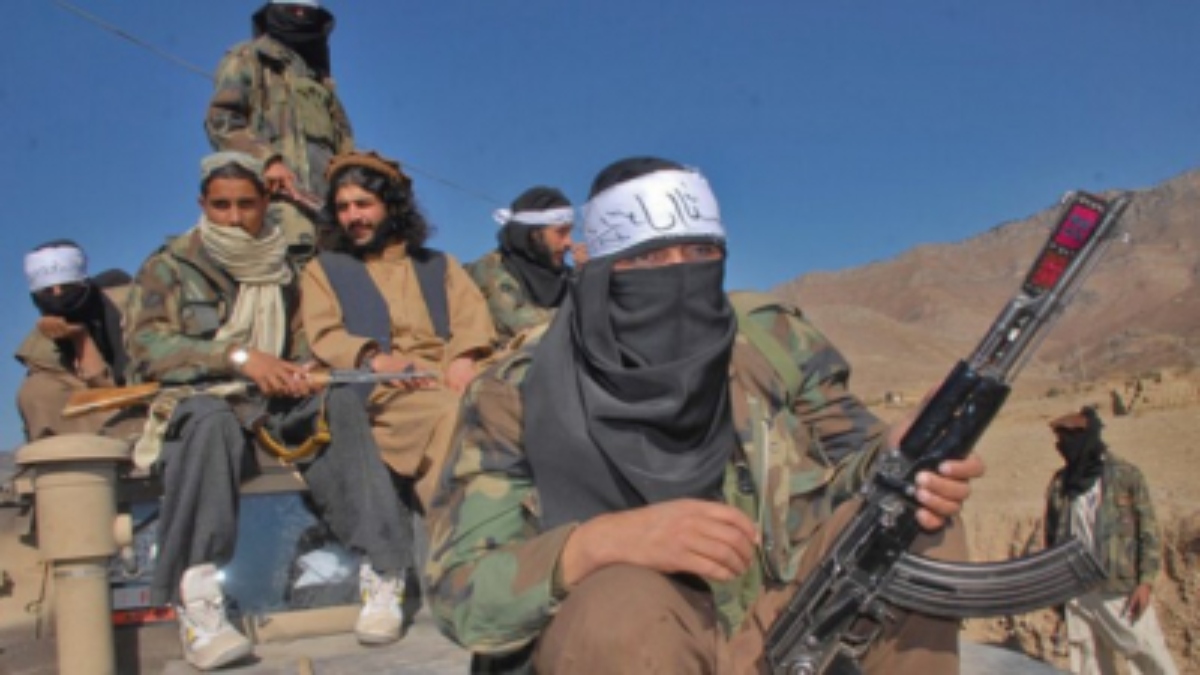The TTP, which is estimated to have a strength around 6,000-6,500 fighters, is now the largest among the two dozen or so such groups that enjoy freedom to manoeuvre, under the oversight of the Taliban regime, according to a report, citing United Nations monitoring document read more
)
The Tehreek-i-Taliban Pakistan (TTP) has been carrying out regular attacks against the Pakistan Army. AFP File
The proscribed Tehreek-i-Taliban Pakistan (TTP) is now the largest terrorist group in Afghanistan, enjoying operational and logistical support from both the Afghan Taliban and factions of the Al Qaeda terrorist network.
According to Dawn, citing United Nations monitoring report, the TTP, which is estimated to have a strength around 6,000-6,500 fighters, is now the largest among the two dozen or so such groups that enjoy freedom to manoeuvre, under the oversight of the Taliban regime.
“The Taliban do not conceive of TTP as a terrorist group: the bonds are close, and the debt owed to TTP significant,” Dawn quoted the 15th report of the ISIL (Daesh) and Al-Qaeda/Taliban Monitoring Team, submitted to the UN Security Council, as saying.
This lends credence Islamabad’s position that Kabul shows reluctance to take action against terrorist groups targeting Pakistan, a stance reiterated by officials like Defence Minister Khawaja Asif and Interior Minister Mohsin Naqvi on multiple occasions, reported Dawn.
The report highlights that the TTP “remains active on a substantial scale in Afghanistan and carries out terrorist activities into Pakistan from there, frequently employing Afghan nationals.”
“TTP has intensified attacks against Pakistan, significantly increasing from 573 in 2021 to 715 in 2022 and 1,210 in 2023, with the trend continuing into 2024,” Dawn quoted the report, updated until May 28, as saying.
This further corroborates Islamabad’s assertions regarding the participation of Afghan nationals in several recent terrorist incidents, including the Bisham bombing that tragically resulted in the deaths of five Chinese engineers and their Pakistani driver. The report specifically references this event.
Moreover, it underscores Pakistan’s concern that TTP has received sophisticated NATO-grade weaponry, including night vision capabilities, since the Taliban assumed control, intensifying the threat posed by terrorist assaults on Pakistani border installations.
The report raised doubts about the Afghan Taliban’s commitment to curbing the TTP threat to Pakistan, citing historical ties. It highlighted the Taliban’s sporadic support and tolerance of TTP activities, including weapons supply and training support from Al Qaeda in the Indian Subcontinent (AQIS).
“AQIS assists TTP in conducting terrorist attacks inside Pakistan, with Tehreek-i Jihad Pakistan (TJP) claiming responsibility so as to relieve pressure on the de facto [Afghan] authorities,” said the report.
A notable incident in September 2023, termed the largest TTP attack of the year, involved Afghan fighters supporting TTP against Pakistani military posts in Chitral, with significant assistance from Al Qaeda.
The report noted Al Qaeda’s presence across Afghan provinces, mainly in the southeast, focusing on training local and TTP fighters. This support includes Afghan fighters and training camps for TTP operations.
Regarding IS-K, the report highlighted the group’s recent expansion and attacks, noting its estimated 4,000 to 6,000 fighters. IS-K has infiltrated Afghan ministries and seeks to embed members in groups like TTP. Kabul’s operations against IS-K have pushed key personnel across borders, posing security concerns for Pakistan, Iran, and Central Asia.
Due to high attrition rates, IS-K has reduced its presence in Afghanistan and increased external operations, focusing on skilled operatives and suicide attacks in Europe, Russia, and neighboring countries. The report underscored deficiencies in Taliban counter-terrorism capabilities against such threats.
With inputs from agencies

 2 months ago
21
2 months ago
21
)
)
)
)
)
)
)
)
)
)
)
)
)
)
)
)
)
)
)
)
)
)
)
)
)
 English (US) ·
English (US) ·